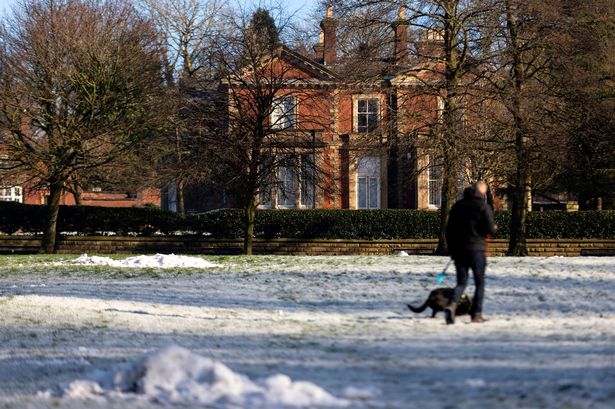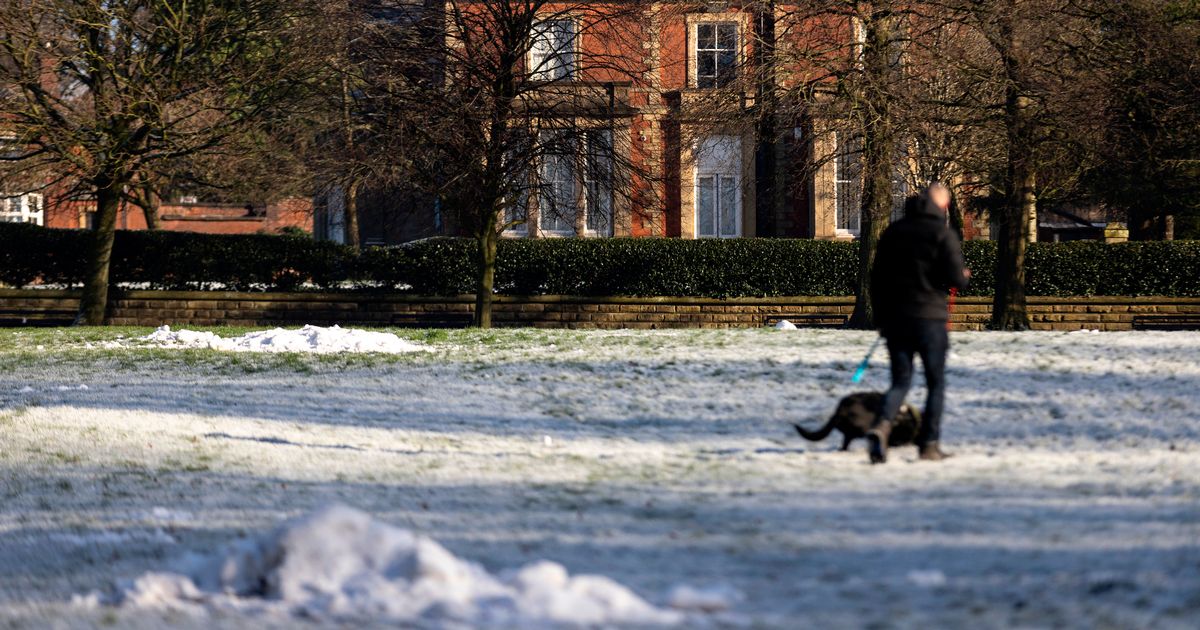Temperatures are set to plummet
15:39, 16 Nov 2025Updated 15:42, 16 Nov 2025
 Snow and ice is possible in parts of the UK, the Met Office says(Image: Ryan Jenkinson | Manchester Evening News)
Snow and ice is possible in parts of the UK, the Met Office says(Image: Ryan Jenkinson | Manchester Evening News)
A warning has been issued by health chiefs ahead of a cold snap set to hit the region next week.
Greater Manchester was among the areas of the country battered by strong winds and heavy rain brought by Storm Claudia on Friday and Saturday.
And in a further shift of conditions, temperatures are now set to plummet starting tomorrow (Monday, November 17).
Snow and ice are possible after what has been a spell of above-average temperatures, the forecaster said.
Join the Manchester Evening News WhatsApp group HERE
The Met Office said that Sunday night (November 16) was the coldest in the UK since March 20 this year. The mercury dropped to minus seven degrees Celsius in Tulloch Bridge, Scotland.
The forecaster’s deputy chief meteorologist, Dan Holley, said: “As Storm Claudia retreats to the south, high pressure to the north-west will drive a cold northerly flow from the Arctic across the UK.
Content cannot be displayed without consent
“This will bring much colder conditions than of late and, whilst generally drier than recent days, there will also be a risk of wintry hazards, such as snow and ice. This will be a notable change in our weather after a prolonged spell of above-average temperatures.”
According to the Met Office, temperatures in Greater Manchester could drop to 2C on Monday, Tuesday and Wednesday, and below freezing, to as low as -1 on Wednesday and -3 on Thursday. They could be as low as 1C on Friday.
No Met Office weather warnings are yet in place.
But the UK Health Security Agency (UKHSA) has issued a Yellow cold heath alert which covers the North West. It will be in force from 8am on Monday to 8am on Friday (November 21).
It says that ‘significant impacts are possible across health and social care services.’
These include ‘a rise in deaths, particularly among those aged 65 and over or with health conditions’, ‘increased demand for remote healthcare services’, ‘impacts on the workforce affecting delivery of services’ and ‘challenges keeping indoor temperatures at the recommended 18°C leading to more risk to vulnerable people.’
However they say the likelihood of the more severe consequences are ‘low.’
